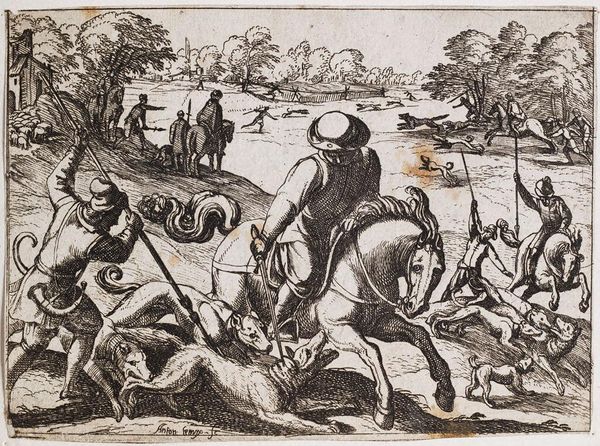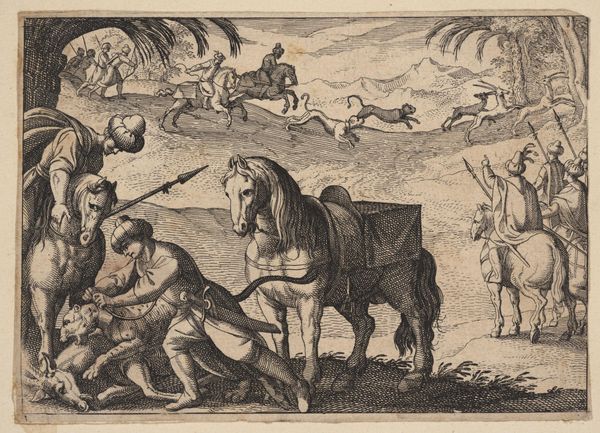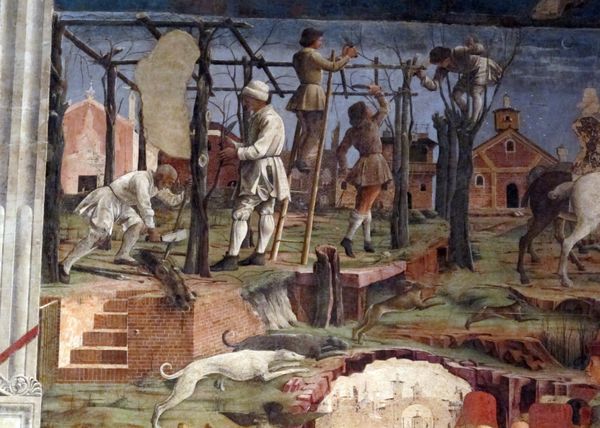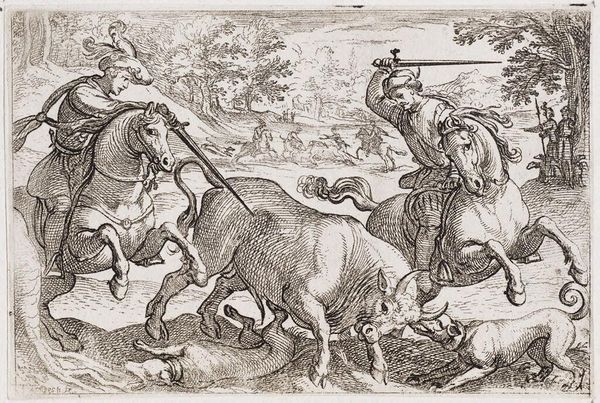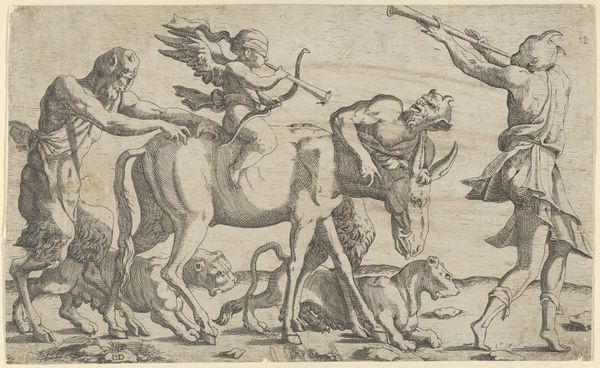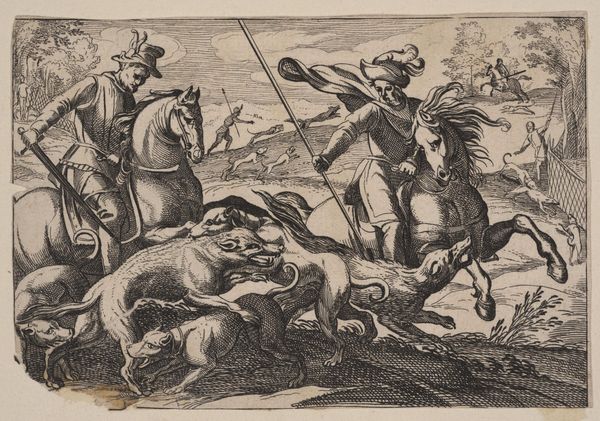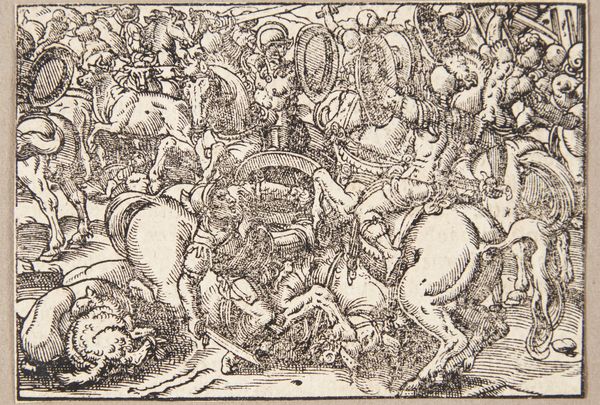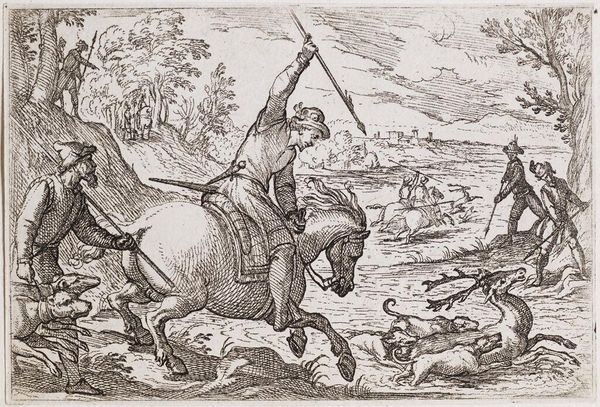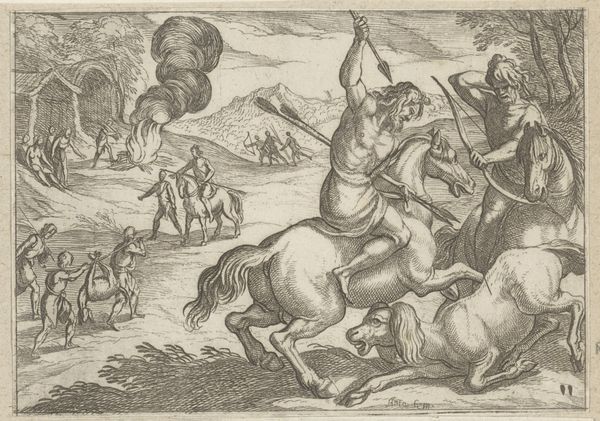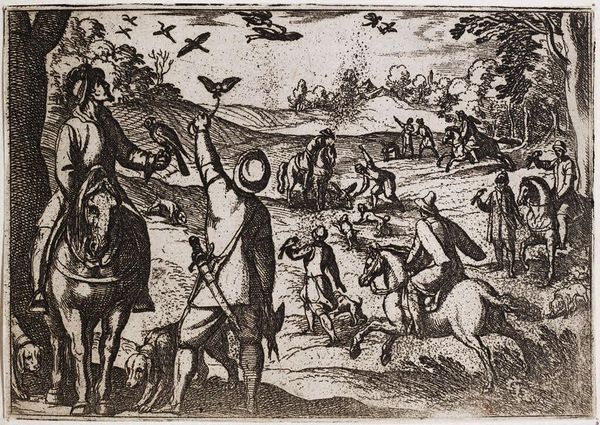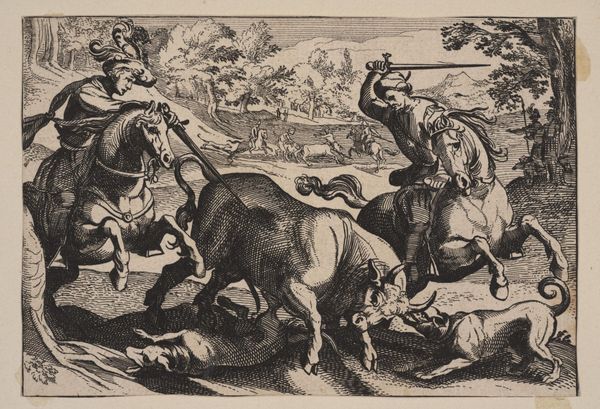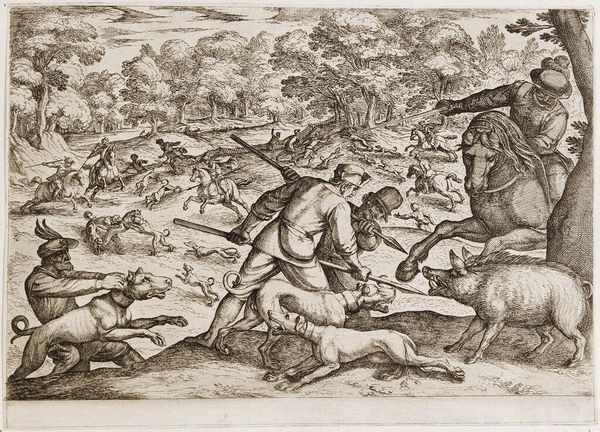
St. George Killing the Dragon 1507
0:00
0:00
vittorecarpaccio
Scuola di San Giorgio degli Schiavoni, Venice, Italy
painting, oil-paint
#
painting
#
oil-paint
#
war
#
landscape
#
figuration
#
oil painting
#
horse
#
christianity
#
men
#
mythology
#
history-painting
#
italian-renaissance
Dimensions: 141 x 360 cm
Copyright: Public domain
Editor: This is Vittore Carpaccio's "St. George Killing the Dragon," created in 1507 with oil paint. It’s quite striking—the level of detail in the landscape contrasts sharply with the gruesome scene in the foreground. What can you tell me about the piece? Curator: Notice how the labor is presented here, it speaks volumes about Venice at the time. We have the idealised labour of the knight—a heroic narrative. However, juxtapose this with the discarded bodies of what one assumes are the dragon's victims, a kind of industrial residue. Consider what the 'dragon' symbolizes: disease, the "other," an economic threat to Venice’s trade routes perhaps? Editor: So you are saying the materials Carpaccio used, oil paint for instance, elevated the subject while also potentially hinting at the grim realities Venice faced economically? Curator: Precisely. The expensive pigments, the very *process* of creating such a lavish painting served the elite. Consider where it was displayed - The Scuola di San Giorgio degli Schiavoni - it served a specific community, who had specific materials at their disposal. Who commissioned the piece, and what material benefits were expected of the art? It served as a material manifestation of Venetian power and wealth, spun through this particular narrative. Does that reshape how you perceive the piece? Editor: It definitely does. I had originally focused on the mythic aspects, but understanding the economics and societal context woven into the *making* of the piece changes my understanding completely. The artwork's production as an economic practice! Curator: Indeed. And seeing the art embedded in those material practices is essential.
Comments
No comments
Be the first to comment and join the conversation on the ultimate creative platform.
